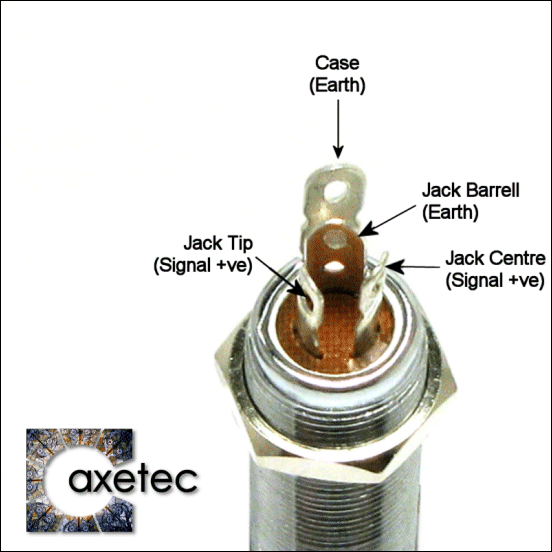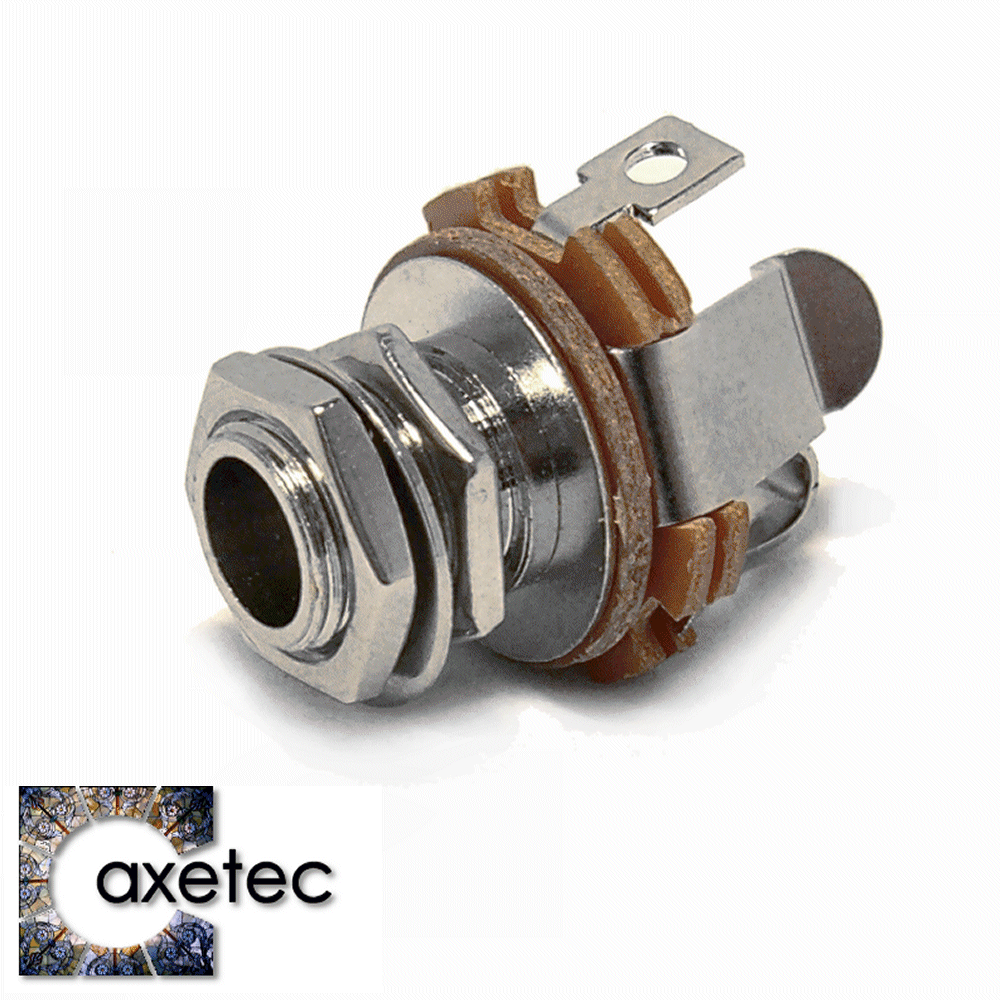Page 1 of 2
small jack on active electronics question.
Posted: Thu Jan 01, 2015 11:14 am
by Leonardo Silva
this is a question that I need from experience, as I do not have a "music store" nearby, I need to import most of the products I use (so can't risk to get them wrong).
I need to do this wiring (they are active Seymour Duncan replicas)
 Staff - these images here are links, not copies, and are OK
Staff - these images here are links, not copies, and are OK
and I know I nees to use an stereo jack, the extra tip to sold the battery ground, but would this one work?

it have 4 tips instead of 3, how this one works compared to the stereo jack on the diagram?
this is the other option, its marked as "stereo" too, I guess it's similar to the one in the diagram, but I would love to work with flush jack, it's a Flying V proyect.

Re: small jack on active electronics question.
Posted: Thu Jan 01, 2015 11:27 am
by Leonardo Silva
also, happy new year to everybody!
Re: small jack on active electronics question.
Posted: Thu Jan 01, 2015 11:29 am
by Mark Swanson
Both of them will work, you just need to know how to make the connections. Just make sure you get a 3-conductor jack, otherwise known as a stereo jack.
Re: small jack on active electronics question.
Posted: Thu Jan 01, 2015 12:03 pm
by Peter Wilcox
It will work fine. The connection labeled jack centre is the same as the one labeled ring in the schematic, and jack barrel is the sleeve. You can ignore the case lug, or you can connect it to the jack barrel.
Re: small jack on active electronics question.
Posted: Fri Jan 02, 2015 12:21 am
by David King
You mostly want a jack that says "Switchcraft" or Neutrik.
Re: small jack on active electronics question.
Posted: Fri Jan 02, 2015 4:54 pm
by Beate Ritzert
If we're on jacks - do You know a type working reliably with Neutrik Silent Plugs? These are thinner than usually, about 0.1 mm and therefore often have contact problem.
Re: small jack on active electronics question.
Posted: Sat Jan 03, 2015 3:57 pm
by David King
Beate,
This is a new issue to me, perhaps it means that Switchcraft is the only reliable brand for both jacks and plugs?
It's a terribly old and undoubtedly outdated technology. Even the phone company went to TT style plugs many decades ago. Making any change is probably going to require an act of God though Apple threatened to change the 3.5mm headphones jack to a proprietary one a year or two ago. As far as I know this change didn't take effect with the iphone 6 but then I'd be the last person to find that out...
Re: small jack on active electronics question.
Posted: Sun Jan 04, 2015 9:51 am
by Halgeir Wold
Just a suggestion - I'd leave the 'ring' open, - not Connected. If someone by accident inserted a mono Jack into the socket, it would short circuit the signal.
Re: small jack on active electronics question.
Posted: Sun Jan 04, 2015 12:18 pm
by Peter Wilcox
The point of connecting the battery to the ring is to "short circuit" it to ground through the sleeve of the mono guitar plug when it is inserted, thus turning on the active pickup circuits, and turning them off when the plug is removed. Of course, if you forget to unplug the guitar it will drain the battery.
Re: small jack on active electronics question.
Posted: Sun Jan 04, 2015 3:58 pm
by Halgeir Wold
That will work, of course, and is commonly used in stomp boxes, but the OP suggests using both tip and ring as signal...
Re: small jack on active electronics question.
Posted: Sun Jan 04, 2015 4:37 pm
by Peter Wilcox
That picture is just a link to an ad from a seller website showing connections for a stereo or balanced signal. The wiring diagram he posted for the pickups is how he would use it, with the negative battery terminal connected to the ring.
Re: small jack on active electronics question.
Posted: Mon Jan 05, 2015 7:50 pm
by David King
Always better to use a jack with isolated switch for battery connection as you don't risk damaging drivers when that +9 or 18V DC signal momentarily flows through your signal circuit. Alembic and a few others bother with this refinement.
Re: small jack on active electronics question.
Posted: Tue Jan 06, 2015 2:52 am
by Peter Wilcox
David King wrote: you don't risk damaging drivers when that +9 or 18V DC signal momentarily flows through your signal circuit.
I don't understand - please explain.
Re: small jack on active electronics question.
Posted: Tue Jan 06, 2015 10:55 am
by Mark Swanson
If you have ever plugged in or unplugged an active instrument with a cable that is plugged into an amp that is turned on, it makes a POW sound that is really nasty as the little surge of current flows directly into your amp...and with a bass amp, which are typically high-powered amps, that POW can be a large spike that can blow speakers.
Re: small jack on active electronics question.
Posted: Tue Jan 06, 2015 11:32 am
by Peter Wilcox
Thanks Mark. So how is this avoided, besides turning the gain on the amp down or off when plugging or unplugging? It would seem that at whatever point the signal circuit is connected/switched to the amp input, whether during plugging or after plugging, there is the potential (pun not intended) for that current surge/voltage spike, unless it is connected through an RC filter which would ramp it up more slowly.
Re: small jack on active electronics question.
Posted: Tue Jan 06, 2015 6:23 pm
by Mark Swanson
You need to plug the cable into the guitar first, then plug it into the amp or the PA. If you plug a "hot" cable into an active guitar it'll do that every time. Or, don't turn on the amp until you are plugged in.
Re: small jack on active electronics question.
Posted: Tue Jan 06, 2015 8:32 pm
by Peter Wilcox
Excuse my ignorance and sorry to derail the thread - I have no experience with active instrument circuitry (except the one I made for a telecaster challenge which has a stereo jack switch).
So it sounds to me like switching the active circuit on is what causes the surge. So if an instrument has a separate "battery connect" or on/off switch, you'll get the pop if it is turned on after plugging in, correct?
Re: small jack on active electronics question.
Posted: Tue Jan 06, 2015 10:35 pm
by David King
Peter this is always the case though some modern preamps have a delayed turn-on or an effective snubber. However as the jack is plugged in you can see how the battery's full voltage potential temporarily goes through the tip and the sleeve until it gets past a certain point and the tip hits it's third and final circuit. A preamp coming on isn't pretty but it's a lot less of a pop than the 9V dc across the tip and sleeve.
Re: small jack on active electronics question.
Posted: Wed Jan 07, 2015 3:48 am
by Peter Wilcox
David, thanks for your reply, and though I think it's on the right track, I don't believe it is entirely correct.
There is nothing connected to the jack (tip, ring or sleeve) that is at the V+ potential - the output of the active circuit should have DC blocking caps, so there is no specific potential at the tip connection. The sleeve is at circuit ground potential. I think the problem is that the battery ground/V- connection (the ring) is floating, and so can have a random potential difference from circuit ground before it is connected to circuit ground. When the plug is inserted into the jack, the tip encounters the sleeve which puts it at circuit ground. Then the tip encounters the ring (battery ground), and if there is a potential difference there from circuit ground, current will flow through through the cable to the amp, causing a pop. I would guess that when an instrument is connected in this manner, sometimes there is a loud pop, and sometimes none, and everything in between, depending on how many electrons have accumulated or are lacking on the ring connector.
Just some late night rambling thoughts.
Re: small jack on active electronics question.
Posted: Wed Jan 07, 2015 2:40 pm
by David King
Peter, the ring and sleeve are at 9 or 18V potential are they not? Sleeve is at ground. The battery + is permanently connected to the preamp. The ring is permanently connected to the battery -. The amperage is very low because the dc has to flow through the circuit and no doubt there is a significant voltage drop but preamps are by nature looking for very small ac signals and many bass preamps and amps are DC coupled with no filtering caps. Don't ask me how I know this. Let's just say that an amp called a DC300A should have told me something...





